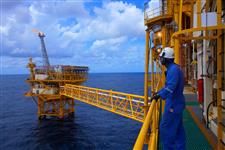
Greenhouse Gas Emissions from UK North Sea Oil Facilities Decline Despite Increased Production
Posted 05/09/2023 13:58
In the UK, greenhouse gas emissions from offshore oil facilities continued to decrease for the third consecutive year in 2022, despite an increase in production, according to a report published by the industry's regulator.
Direct emissions in 2022 were 3 percent lower than the previous year, resulting in a 23 percent reduction in greenhouse gas emissions from the extraction process since 2018. These figures, however, do not account for Scope 3 emissions, which represent the carbon released when end-users burn the fuels. Scope 3 emissions are likely to have risen in tandem with increased production.
While the UK's oil and gas industry is on track to achieve its interim reduction targets of 25 percent by 2027, the UK North Sea Transition Authority emphasized that achieving the promised 50 percent reduction in direct emissions by the end of the decade will require "bold measures."
Greenhouse gas emissions associated with upstream oil and gas production in the UK reached their peak in the early 2000s and have been declining since. This trend is attributed to declining production, the decommissioning of older facilities, and efforts to reduce methane leaks and flaring.
The regulator implemented an obligation in 2021, requiring the oil and gas industry to contribute to the UK's goal of achieving net-zero emissions by 2050. It also published guidance stating that new developments should eliminate routine flaring or venting of gas across all facilities by 2030.
In 2022, the average carbon intensity of oil and gas produced in the UK was 21 kilograms of CO2 per barrel of oil equivalent. This level is roughly a quarter of the carbon intensity of imported liquefied natural gas but more than twice as high as pipeline imports from Norway, where routine flaring is prohibited.








